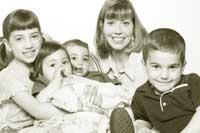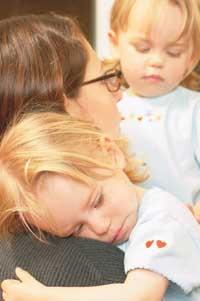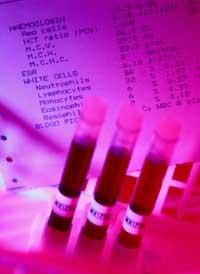Greater possibilities of twins

Normally, in the follicles of the ovaries, a single egg arrives a month. It is released, can be fertilized for several hours and, if it is not fertile, it dies. As the age of the woman increases, the mechanism has more defects until menopause arrives, from that moment the ovaries stop disappearing.
Thus, many mature mothers tend to in vitro fertilisation. In order to increase the chances of pregnancy, in vitro fertilisation more than one embryo is implanted in the uterus. Therefore, there is a high risk of twins and/or triangles. Therefore, it is not surprising that this is the reason why the number of double births increases as the age of the mother increases.
However, researchers have analyzed the double deliveries that have occurred in the Netherlands in the last decade, and have found that more than half have been due to natural fertilisation. In addition, most of the mothers who had twins were over 35 years old. According to this, and even if it seems paradoxical, adult women who become pregnant have more chances of being twins than young women.
It should be noted that in most cases twins are not exactly the same. In fact, the same twins are born when a single egg is fertilized and divided into the early stages of development. The different twins are born when two eggs are fertilized simultaneously. They are not equal as they come from two different eggs and two sperm.
Excess is never good

Normally a single egg of the month is released. So, why do women over the age of 35 have more twins than younger mothers? Researchers have shown that the FSH hormone is responsible.
This hormone promotes the development of follicles. The researchers already knew that the concentration of FSH increases from 35 years and up to adult menopause. It seems to be a mechanism of the body to balance the decline of the ovaries. The researchers have jointly studied the concentration of FSH and the development of follicles and concluded that when there is excess FSH more than one egg is released per month.
This is the explanation of the trend of women over 35 to be twins. To reach this conclusion, 959 cycles of 507 women have been analyzed. 105 women had more than one ovulation in the same cycle, of which only 5 were under 30 years, 45 were between 30 and 35 years old and 55 were over 35 years old.
Measuring fertility
In addition, at Sheffield University in England, a test has been invented to measure the fertility of women. The test is based on the concentration of three hormones: FSH, inhibine B and AMH. As noted, the concentration of FSH increases as menopause approaches, while that of the other two decreases.

The combination of three represents female fertility. Subsequently, they introduce the data in a graph that takes into account the mean and age of the other women, and hence the decrease in fertility is calculated in the following two years.
According to the researchers who have invented the method, it is very useful. They consider that the age most suitable for having children is between 20 and 30 years, but since today motherhood has been delayed, this type of methods can be of great help to make decisions.
Published in 7K.
Buletina
Bidali zure helbide elektronikoa eta jaso asteroko buletina zure sarrera-ontzian











